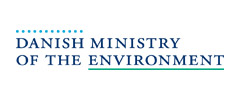Vision & Strategy
Climate change
Energy and climate change
WECF strategy
1. Climate change
Global warming is the gradual increase in world temperatures
caused by polluting gases, such as carbon dioxide, which are
collecting in the air around the Earth and preventing heat
escaping into space (as defined by the Cambridge dictionary ). The expression
“climate change” also designates this phenomenon. It is used
in many international reports.
Climate is part of the Earth’s fragile interdependent ecosystem.
However, it is disturbed by global warming. Addressing climate
change is a serious challenge for humanity. In 2001, the International
Panel on Climate Change (IPCC), which represents the international
scientific community, published results of climate simulations
in a report on global warming. The simulations showed that
there can be no "quick fix" to the problem of global warming.
Even if all emissions of greenhouse gases were to cease immediately,
the temperature would continue to increase after 2100 because
of the greenhouse gases already in the atmosphere (MASTRANDREA
and SCHNEIDER, NASA, 2005). The IPCC warns that we have less
than six years left to peak and begin reducing global emissions
responsible for global warming. The objective is to avoid exceeding
2C° of average warming. This limit the Earth would enter
irreversible conditions with terrible consequences upon the Earth
capacity to provide life (Dieback of the Amazon rainforest,
cessation of the ocean currents, shifts in monsoons, and melting
of land-ice sheets, which could lead to 7 meter ocean rises
(WBGU 2009)). Nasa's James Hansen talks about "Planet Earth" being
in "imminent peril". According to NASA, global warming
is an increase in the average temperature of Earth's surface
much greater than most past rates of increase. Scientists worry
that human societies and natural ecosystems might not adapt
to rapid climate changes. A majority of climatologists have
concluded that human activities are responsible for most of
the warming by enhancing the Earth's natural greenhouse effect
that warms the Earth. Thus, global warming is a global threat
that needs to be addressed urgently.
2. Energy and climate change
Poverty, inequality, energy and climate change are
intrinsically linked. Climate change increases inequalities
and threatens the achievement of the Millennium Development
Goals (WHO 2009). Climate change and unsustainable energy
consumption increase global health, poverty and environmental
problems.
Climate change will most strongly hit the poor in poor countries
and in the most vulnerable regions (mountainous, water-scarce,
low food producing). It results in the flooding of island states
and coastal areas, increase heat waves, droughts, floods,
storms, loss of species and ecosystem diversity, and acidification
of oceans which leads to lower absorption of CO2. Further consequences
of climate change are that the water supply is jeopardised
(millions of people depend on glaciers), food production is
expected to decline by 5-12%, health declines from increased
diseases (infectious, diarrhoea, vector and food-borne illness)
and fatalities (resulting from floods, storms), an increase
of millions of climate change refugees, and a reduction of
economic potential from loss of natural resources, biodiversity,
fisheries, of up to 20% of GDP (Stern Review on the Economics
of Climate Change 2006).
The main sectors contributing to Green House Gas emissions
(GHG) are energy usage, forest destruction, housing, transport and
agriculture. In developing countries, the greatest expected
increases in CO2 emissions are in the sectors of forest destruction,
housing and transport (Inter-governmental Panel on Climate
Change, Poznan, 2008). Reducing emissions in one area and not
in others is ineffective and climate change solutions need to
be integrated. Therefore WECF uses its expertise in Energy
in an overall strategy in climate change and energy that integrates
transversal areas solutions.
3. WECF strategy
During the very last years, there has been a growing international
awareness about climate change being an imminent issue. Unfortunately,
the sound of alarm often does not come with the solution. Indeed,
the task seems so huge that the classical reaction consists
in doing nothing. In fact “Plus un risque est grand, plus il
est nié tant l’imaginaire se refuse à accepter ce que représenterait
pour l’individu la réalisation du risque (DUPUY JP, 2004).”
This psychological trend makes us deny what we can’t change
unless clear solutions come for the public to rally, so that we can have the feeling of being part of the solution.
WECF's strategy is to intervene on climate change and energy
at every level. WECF aims to promote poverty eradication through
empowering, effective, equitable solutions for climate change
mitigation and adaptation.
At a community level, climate change leaves isolated rural
communities vulnerable. WECF ensures adaptation to climate change
for the most vulnerable groups by facilitating access to sustainable,
safe, sufficient and affordable energy, thus promoting a
healthier environment and contributing to the reduction of poverty
as well as to the sustainable development of the country. WECF
works towards making (global) mitigation instruments and funds
accessible for women, indigenous peoples, marginalized groups
and the poor. In this way, climate funds will support local
renewable energy and carbon-reducing local investments, increase
demand for local products and services, strengthen local markets,
increase control over local resources and ensure participation
of women.
At the same time, mitigation and adaptation funds, as well as
direct access to sustainable, safe, sufficient and affordable
energy for household communities, can provide much-needed improvements
to the livelihoods of the deprived, reducing indoor air pollution
from renewable energies, improving health and hygiene from
climate-adaptive sanitation systems, conserving and restoring
forest ecosystems, and improving access to integrated, safe
and affordable mobility.
WECF policy on adaptation to climate change is also focused
on capacity building on participatory approaches, innovative
technologies and pro-poor financial mechanisms in cooperation
with schools, scientists, entrepreneurs and financial institutions.
At the national and the international level, WECF advocates
and promotes the switch from fossil fuels and nuclear energy
towards sustainable and decentralised alternatives, documenting
the damage of the former and the benefits of the latter. WECF
seeks to integrate gender and human rights perspectives into
the international negotiations such as the UNFCCC, the International
Renewable Energy Conference, promoting mechanisms accessible
for local communities, NGOs and women’s organisations.
Gender focus:
It is essential that national and global policy processes
include the participation of affected peoples and are based
on local evidence and knowledge of climate, development and
structural poverty elimination. Climate change governance should
be global in scope and accept the perspective of the most vulnerable
countries and peoples as being central to protecting humankind. A
structural shift towards de-carbonisation of economic development
can be achieved with women and civil society groups acting
as key “change agents” in strategic alliances.
Women and children, displaced and indigenous people, and rural
and slum dwellers are the most affected. Women are not only
more vulnerable to the effects of climate change than men—primarily
as they constitute the majority of the world’s poor and are
more dependent for their livelihood on natural re- sources
that are threatened by climate change, they are also effective
actors or agents of change in relation to both mitigation and
adaptation. Women often have a strong body of knowledge and
expertise that can be used in climate change mitigation, disaster
reduction and adaptation strategies. Furthermore, women’s responsibilities
in households and communities, as stewards of natural and household
resources, positions them well to contribute to livelihood
strategies adapted to changing environmental realities.

































